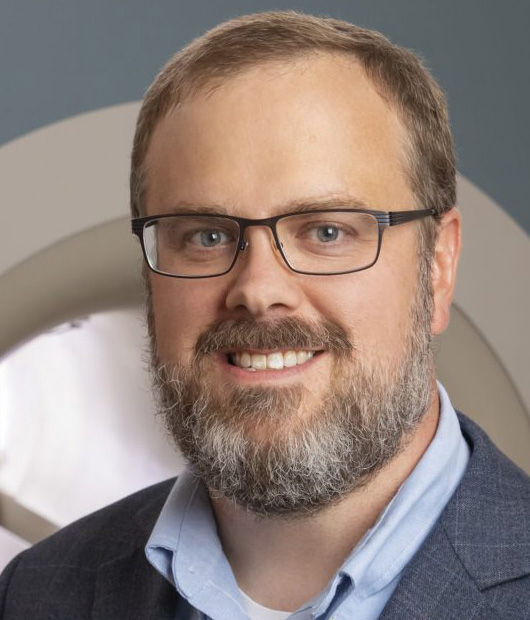Brad Sutton and Zhi-Pei Liang from the Integrative Imaging research theme are working together to improve the imaging of speech function, especially as it applies to the facial birth defect of cleft palate.
Both Liang and Sutton work to advance magnetic resonance imaging (MRI) methods, with part of Liang’s research dedicated to improving cardiac imaging, while Sutton has a focus on improving speech imaging. In a recent collaboration, their research groups are applying Liang’s techniques for cardiac imaging to speech imaging methods. Using a combination of Sutton’s fast acquisition techniques and Liang’s image reconstruction algorithms for undersampled data, it has led to faster acquisition and reconstruction of MRI images and, therefore, improved visualization of human speech function.
“By taking advantage of some of the methods that Zhi-Pei Liang’s group has developed to accelerate the acquisition and reconstruction, we are able to accelerate the frame rate of imaging by a lot,” Sutton said. “Our primary focus is cleft palate. If you were just to resolve structural anatomy you wouldn’t fully understand how different structures in the mouth are supposed to function. So by looking at the dynamics of how things move with different speech processes, you can understand better what a real functional anatomy should look like.”
Sutton, a faculty member in the Department of Bioengineering, has published many papers on research involving MR imaging of speech morphology, structure, and dynamic imaging.
Liang’s research group developed a novel sparse sampling technique for signal acquisition and reconstruction that enables high-quality image formation from highly under-sampled data. They used the method to demonstrate fast, three-dimensional imaging of a beating heart with high temporal resolution. Applying these techniques in Sutton’s work provided never-before-seen, highly-resolved MRI images of the movements involved in speech function. The frame rate is fast enough that Sutton has produced a video of the movements.
“In our previous work we were able to achieve something like 20 frames per second with a single midsagittal slice,” Sutton said. “So we can see the tongue move, see the soft palate, which is split in cleft palate, and see it move in healthy adults. But now, with the methods we are collaborating on with Zhi-Pei Liang, we can get five slices at 20 frames per second. So we can start to see what’s happening in multiple planes and really visualize three-dimensional movements.”
Sutton said it has been a perfect collaboration between his Magnetic Resonance Functional Imaging Lab and Liang’s MR Engineering Research group.
“My group is writing the pulse sequences and figuring how to acquire the data quickly, and Zhi-Pei’s group figures out how to use that data to make really fast movies,” he said. “We’ve been sampling really fast but we’re not sampling enough in the traditional sense to actually make an image. So Zhi-Pei’s group can come in and, with that limited set of information, still create a full set of images for a movie (for cardiac or speech imaging).
“The speech imaging problem is a little bit different but we were able to adapt many of the features of the cardiac imaging technique. A heart tends to do the same things over and over again whereas the lips and tongue tend to move differently each time but you can get some of the same motions.”
Both Liang and Sutton are members of the Bioimaging Science and Technology group at Beckman.
